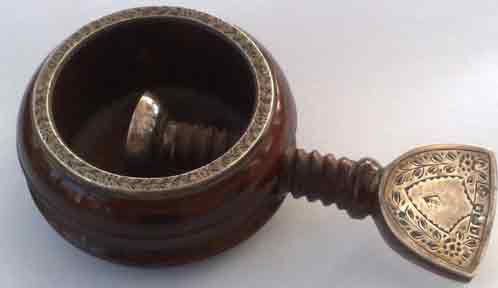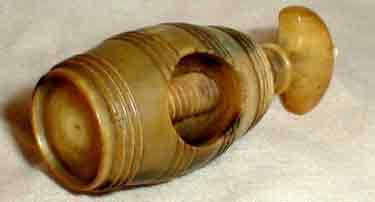Nutcrackers for Collectors




A Short History of Nutcrackers
Nutcrackers of one form or another have been used by man ever since
he learnt to pick up a rock and used it to smash open a nut shell.
Some early documented references to nutcrackers are :
. Geoffrey Chaucer
(circa 1343 - 1400) is reputed to refer to a nutcracker in the
Canterbury Tales
. 1372 in France,
Jeanne d'Evreux refers to 'a device in silver for breaking nuts
worth nine Francs'
. 1548 in England, Sir
Thomas Elyot uses the Latin term 'nucifrangibulum' for a nutcracking
device
. 1650 in England, an
entry in 'Discolliminium' says 'He was fain to make a nutcracker of
it'
. 1664 in England, John
Evelyn commented on the suitability of boxwood for the construction
of nutcrackers in his work Sylva on trees and forests
. 1792 in England,
Foote tells of 'a pair of nutcrackers presented by Henry VIII to
Anne Boleyn' in Nabob.III.Works;
These early nutcrackers are believed to have been of the lever type
- usually a pair of nutcrackers, the screw-based nutcracker probably
first appeared in the 17th Century.
Wood was the earliest material used and it is likely that pincers
forged by local blacksmiths formed the basis for early wrought iron
nutcrackers, these were then further developed in other metals such
as bronze and brass.
Many early treen (made of wood) nutcrackers have not survived but
those that have are often of figural form, representing humans,
animals and a wide variety of other decorative subjects.
Nutcrackers were available from mail-order catalogues in the late
19th Century which is when the change from one-off hand-produced
nutcrackers to commercial industrial production took place. Once a
design was created (and sometimes registered), there were often many
production runs so date of registration can't always be relied on as
date of manufacture. It was also in the 19th Century that, largely
due to the increase in tourism, souvenir nutcrackers started to be
produced in large numbers, particularly in Germany, Switzerland and
the Tyrol.
By examining Patent and Registration records it is
possible to see what a wide variety of nutcrackers were designed in
the 19th and 20th Centuries, lever, screw and percussion types
dominate but other hybrids do exist.
The demand for nutcrackers has decreased in recent times due to the
prevalence of pre-shelled and packaged snacks but new designs do
appear from time-to-time so they'll surely be with us for some time
yet.

These 17th century iron nutcrackers are in the Secq des Tournelles
Museum in Rouen, France.

A page from a pattern book for eighteenth century brass English
nutcrackers.